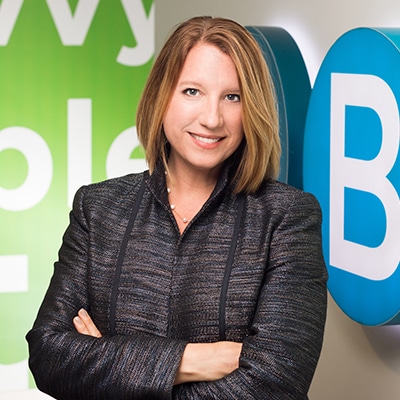Article written by:
Rebekah Smith, CPA, CFF, CVA, MAFF
Director of Forensic & Dispute Advisory Services
Dustin Minton, CPA, MBA
Director, Restaurant Services
Jeremy Bronson
Director, Accounting & Business Advisory Services
The U.S. Department of the Treasury issued “Revisions to Loan Forgiveness Interim Final Rule and SBA Loan Review Procedures Interim Final Rule” (“IFR”), on June 22, 2020. The IFR addresses forgiveness in light of the newly passed Paycheck Protection Program Flexibility Act of 2020 (“Flexibility Act”) and some long-awaited clarifications.
- When can a borrower apply for loan forgiveness?
A borrower may submit a loan forgiveness application any time on or before the maturity date of the loan – including before the end of the covered period – if the borrower has used all of the loan proceeds for which the borrower is requesting forgiveness. The clarification meant that rather than just two choices, eight or 24 weeks, that companies could pick any week in between.
If the borrower does not apply for loan forgiveness within ten months after the last day of the covered period, or if SBA determines that the loan is not eligible for forgiveness (in whole or in part), the PPP loan is no longer deferred and the borrower must begin paying principal and interest.
For additional information, see the GBQ article recently published, “SBA PPP: Borrowers Allowed to File Before the End of the 24 Weeks.”
- Are there caps on the amount of loan forgiveness available for owner-employees and self-employed individuals’ compensation?
For borrowers that received a PPP loan before June 5, 2020, borrowers can elect to use an eight-week covered period. If the eight-week covered period is used, owners can include an eight-week equivalent of the 2019 compensation (8/52) or a maximum of $15,385, whichever is less.
If electing the 24-week covered period, the amount for owner-employees and self-employed individuals is capped at 2.5 months’ worth of 2019 compensation or $20,833 per individual, whichever is less.
Below defines what expenses can be included in owners’ compensation amounts by entity type:
-
- C corporation owner-employees are capped by the amount of their 2019 employee cash compensation and employer retirement and health insurance contributions made on their behalf.
- S corporation owner-employees are capped by the amount of their 2019 employee cash compensation and employer retirement contributions made on their behalf, but employer health insurance contributions made on their behalf cannot be separately added because those payments are already included in their employee cash compensation.
- Schedule C or F filers are capped by the amount of their owner compensation replacement, calculated based on 2019 net profit.
- General partners are capped by the amount of their 2019 net earnings from self-employment (reduced by claimed section 179 expense deduction, unreimbursed partnership expenses, and depletion from oil and gas properties) multiplied by 0.9235.
The following owners’ benefits are considered compensation and should not be separately included in employees’ health insurance or retirement benefit line items on the forgiveness application:
-
- Self-employed, general partners or S corporation shareholders’ health insurance
- Self-employed and general partners retirement plan contributions.
Note, however, that if you apply for forgiveness early, say week ten, that for any of the above amounts, the cap would have to be adjusted on a pro-rated basis. In other words, the cap for an owner-employee who had made over $100,000 in 2019, that cap would be $19,230 ($100,000/52 * 10 weeks).
- What relief has been added to simplify the average FTEE calculation and safe harbors?
Clarifications on average FTEE calculations and an additional safe harbor were added. See GBQ’s recently published article that addresses commonly asked questions and provides tips and reminders as you work through these calculations.
- Will I be penalized if I can’t hire all of my employees back and/or my employees quit?
The Flexibility Act provides a new safe harbor for borrowers with a reduction in FTEEs. This new safe harbor allows for 100% forgiveness despite the FTEE reduction if the borrower is able to document an inability to return to the same level of business activity as it was operating at before February 15, 2020, if such an inability is due “to compliance with requirements established or guidance issued by the Secretary of Health and Human Services, the Director of the Centers for Disease Control and Prevention, or the Occupational Safety and Health Administration during the period beginning on March 1, 2020, and ending December 31, 2020, related to the maintenance of standards for sanitation, social distancing, or any other worker or customer safety requirement related to COVID–19.”
For additional information, see the GBQ article recently published, “SBA PPP: Borrowers Allowed to File Before the End of the 24 Weeks.”
- I have used all my PPP loan proceeds and I want to apply for forgiveness. What should I do now and what should I expect during the loan forgiveness process?
Based on our discussion with several banks over the past weeks, it appears banks are not currently accepting forgiveness applications, and it could be as late as fall before some are accepting applications. However, there are several things you can do to start preparing.
-
- Determine which form you will be able to use. Borrowers should plan to submit SBA Form 3508/3508EZ or the lender’s equivalent form. There is a new EZ application for businesses that meet one of the following three criteria. These businesses can use the new EZ loan forgiveness application; however, they still need to do the payroll and nonpayroll calculations and provide support for those numbers when applying for forgiveness. Criteria for EZ forgiveness application includes (four pages of instructions):
-
-
- The borrower is a self-employed individual, independent contractor, or sole proprietor, who had no employees at the time of the PPP loan application and did not include any employee salaries in their loan application.
- The borrower did not reduce annual salary or hourly wages of any employee by more than 25 percent during the covered period AND did not reduce the number of employees, or the average paid hours of employees between January 1, 2020, and the end of the covered period.
- The borrower did not reduce annual salary or hourly wages of any employee by more than 25 percent during the covered period AND was unable to operate during the covered period at the same level of business activity as before February 15, 2020, due to compliance with COVID-19 requirements established, or guidance issued by, various federal agencies.
- Gather supporting documents. The instructions to the 3508/3508EZ set forth the documentation to both be submitted to the bank and to be retained by the business.
- Have your calculations and documentation reviewed. The key to receiving forgiveness timely is accuracy and organization; providing an accurate calculation of the loan forgiveness amount is the responsibility of the borrower, and the borrower attests to the accuracy of its reported information and calculations on the Loan Forgiveness Application Form.
- Understand the lender’s process. To ensure that your forgiveness process goes smoothly, it is helpful to understand what the lender will be doing. Per the guidance, lenders will:
- Confirm the borrower’s calculations on the borrower’s SBA Form 3508/3508EZ or lender’s equivalent form, including the dollar amount of the (A) Cash Compensation, Non-Cash Compensation, and Compensation to Owners claimed and (B) Business Mortgage Interest Payments, Business Rent or Lease Payments, and Business Utility Payments claimed on the PPP Loan Forgiveness Calculation Form, by reviewing the documentation submitted with the SBA Form 3508/3508EZ or lender’s equivalent.
- Confirm that the borrower made the calculation correctly by dividing the borrower’s Eligible Payroll Costs claimed by 0.60.
- If the lender identifies errors in the borrower’s calculation or material lack of substantiation in the borrower’s supporting documents, the lender will work with you to remedy the issue. The lender does not need to independently verify the borrower’s reported information if the borrower submits documentation supporting its request for loan forgiveness and attests that it accurately verified the payments for eligible costs.
- The lender must issue a decision to the SBA on a loan forgiveness application not later than 60 days after receipt of a completed loan forgiveness application from the borrower. Note: the key here is a completed application, back to the point above, as to submitting a complete and accurate calculation for timely forgiveness. The SBA will, subject to any SBA review of the loan or loan application, remit the appropriate forgiveness amount to the lender, plus any interest accrued through the date of payment, not later than 90 days after the lender issues its decision to SBA.
-
If you have questions, please contact a member of GBQ’s SBA team – Rebekah Smith, Dustin Minton, or Jeremy Bronson.

